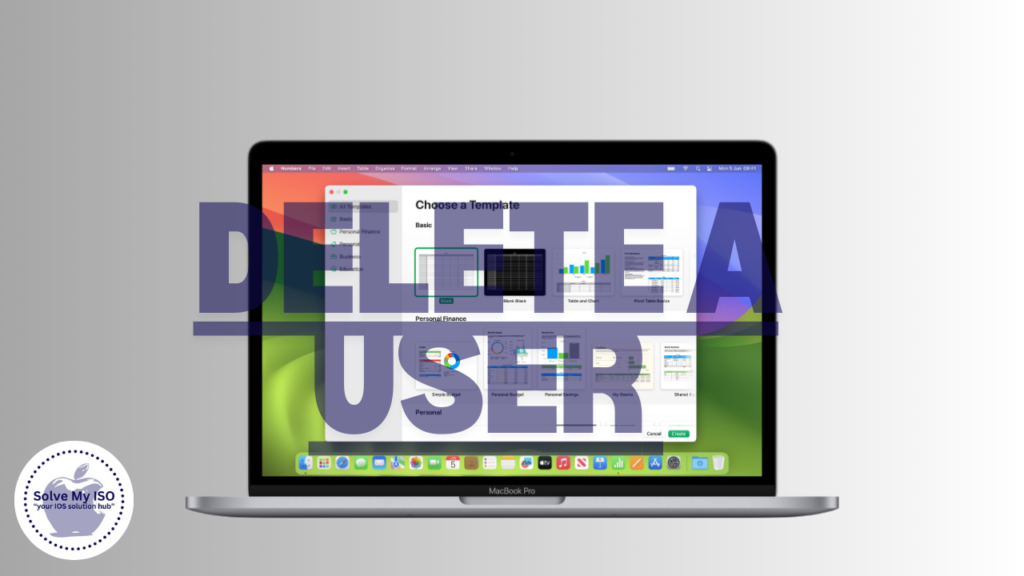Managing user accounts on your Mac is crucial for maintaining a well-organized and secure system. Whether you’re simplifying your user list, recycling an old device, or ensuring that only authorized users have access, knowing how to delete a user on Mac can be extremely beneficial. This comprehensive guide will walk you through the entire process, ensuring you can manage your Mac’s user accounts with confidence.
Prerequisites and Preparations
Before diving into the steps to delete a user account, there are some essential preparations you need to make to ensure a smooth and safe process.
Checking User Permissions
First, ensure you have the necessary permissions to delete a user. You must be logged in as an administrator. To check if you are:
- Go to System Preferences.
- Click on Users & Groups.
- Verify if “Admin” appears under your username.
Ensuring Data Backup
Deleting a user account permanently removes their data unless you opt to save it. It’s advisable to back up any critical data before proceeding. Utilize Time Machine or another backup method to secure the user’s files.
Logging in as an Administrator
Log out of the current user and log back in as an administrator. This step ensures you have the required permissions to make changes to user accounts.
Methods to Delete a User on Mac
Using System Preferences
The most straightforward method to delete a user on Mac is through System Preferences. Follow these steps:
- Navigate to System Preferences from the Apple menu.
- Select Users & Groups.
- Click the lock icon and enter your admin password to unlock changes.
- In the user list, select the user account you wish to delete.
- Click the minus (-) button at the bottom of the user list.
- You’ll be prompted to choose what to do with the user’s home folder. You can either delete the home folder (by selecting “Delete the home folder”) or save it as a disk image (by selecting “Save the home folder in a disk image”).
- Confirm the action by clicking Delete User.
Using Terminal
Terminal offers a more advanced approach to deleting a user on Mac. Here are the steps:
- Open Terminal from the Applications > Utilities folder.
- To list all user accounts, type:
“`bash
dscl . list /Users
“`
- Identify the user account you wish to delete.
- To delete the user account, type:
“`bash
sudo dscl . -delete /Users/username
“`
Replace “username” with the actual username of the account you want to delete.
- Confirm the deletion when prompted by entering your admin password.
Using Directory Utility
Directory Utility provides another means to manage user accounts. Here’s how:
- Open Directory Utility by navigating to Applications > Utilities > Directory Utility.
- Click the lock icon and enter your admin credentials to unlock changes.
- Access the Edit menu and select Enable Root User.
- Log out and log back in as Root.
- Open Terminal or System Preferences > Users & Groups to delete the user following the methods previously outlined.
- Once done, disable the Root User from Directory Utility.
Considerations After Deleting a User
Managing Remaining Files and Data
After deleting a user, there might be leftover files. It’s essential to manage them properly:
- Check the Deleted Users folder in the Users directory.
- Reassign important files to another user or delete unnecessary files.
Adjusting System Settings
Ensure your system settings are optimized post-deletion:
- Review System Preferences for any settings tied to the deleted user.
- Adjust login options if necessary to ensure a seamless user experience for remaining accounts.
Troubleshooting Common Issues
User Account Not Showing in System Preferences
If the user account doesn’t appear:
- Verify admin privileges.
- Restart your Mac and try again.
- Use Terminal commands to list and manage user accounts.
Error Messages During Deletion
Common errors may include:
- “User account is currently in use”: Ensure the user is logged out before deletion.
- “Operation failed”: Verify admin permissions and retry the process.
Conclusion
Deleting a user on Mac is a manageable process when approached methodically. By following the steps outlined in this guide, you can ensure proper user management and maintain a well-organized Mac system. Remember to back up data, understand your options, and follow best practices for system maintenance. Happy computing!
By effectively managing your user accounts, you’re not only ensuring the security and organization of your system but also enhancing overall performance and user experience. If you found this guide helpful, share it with other Mac users. For more tips and insights, stay tuned to our blog.
